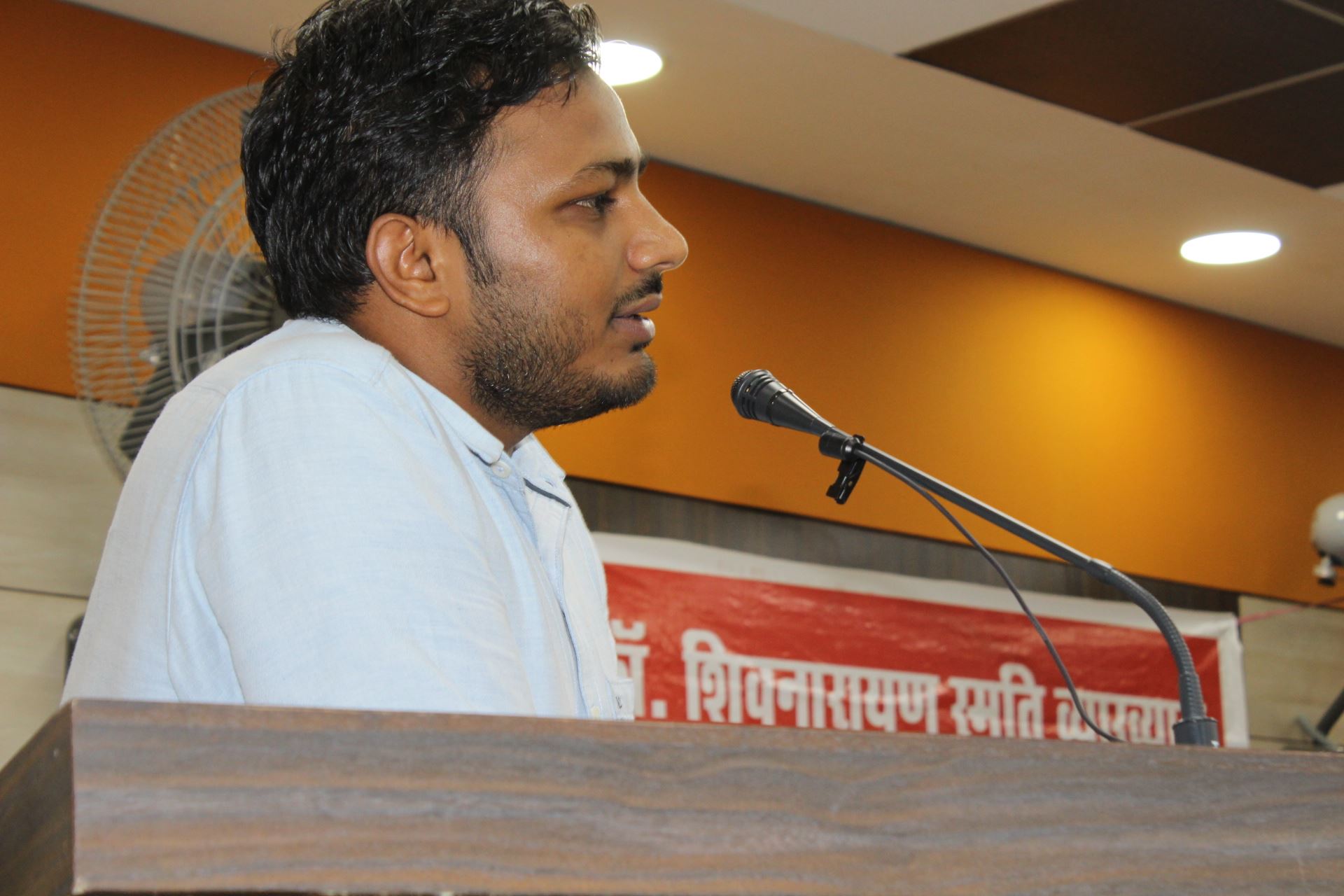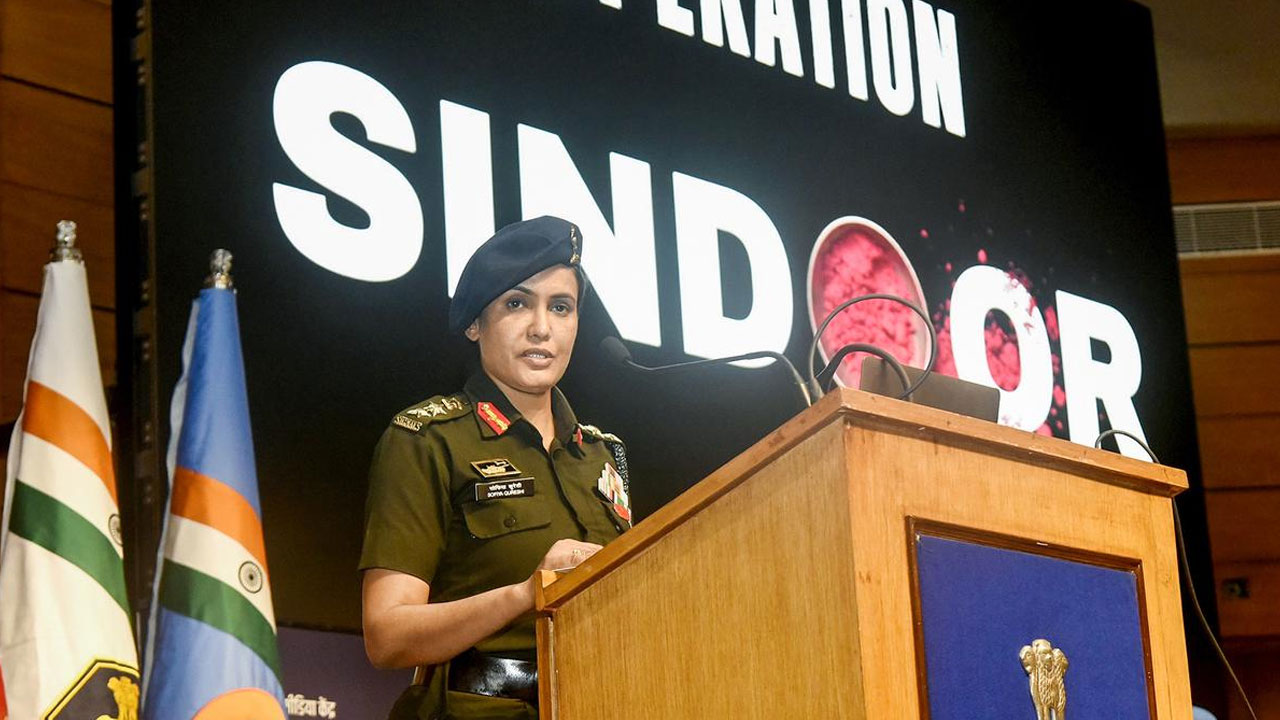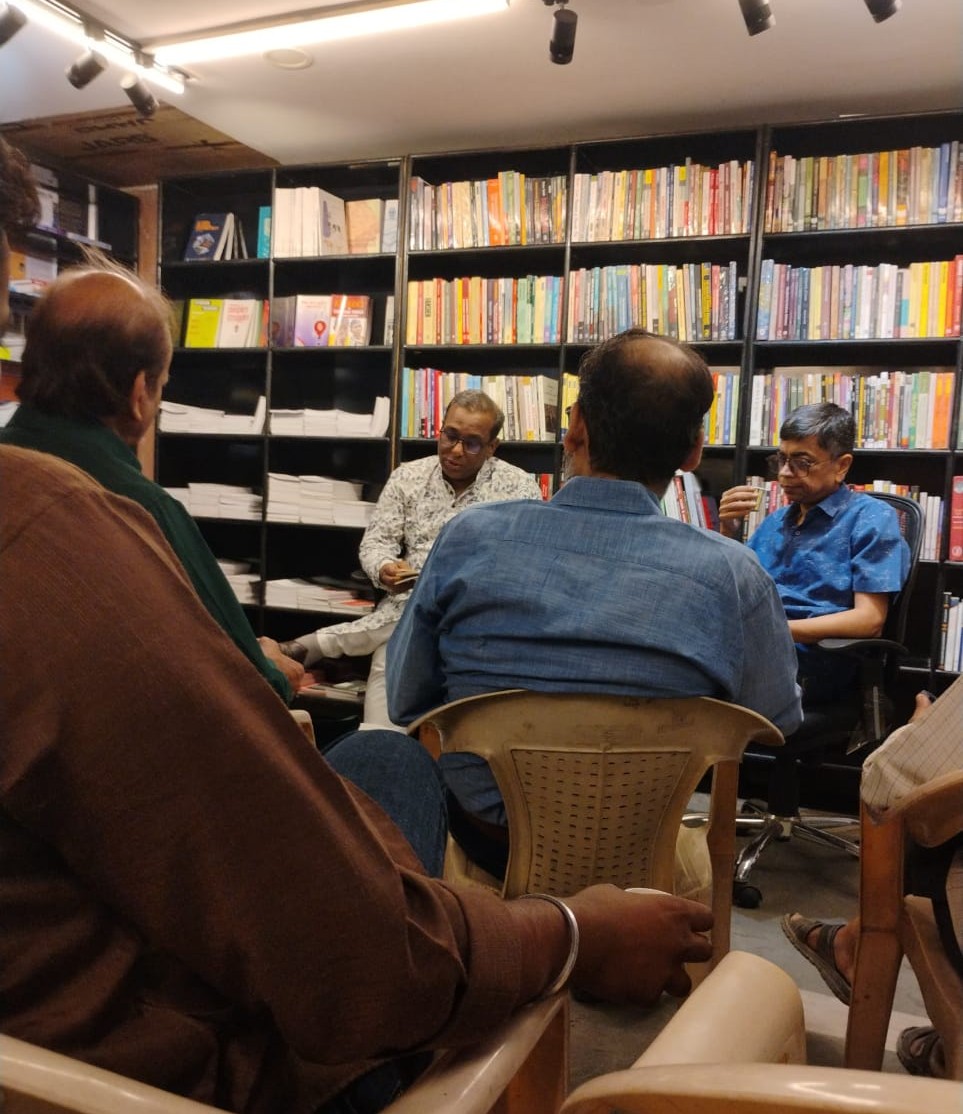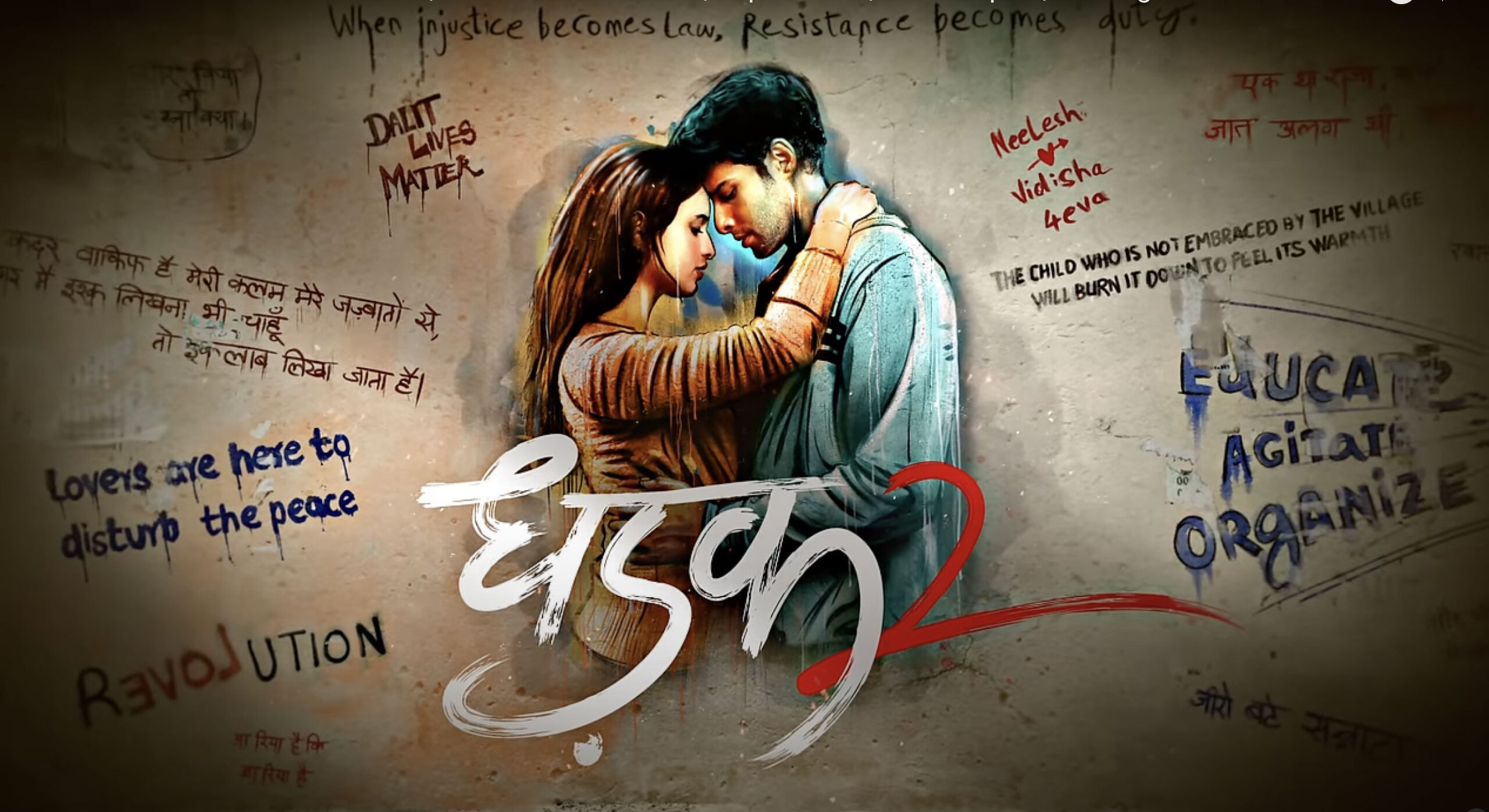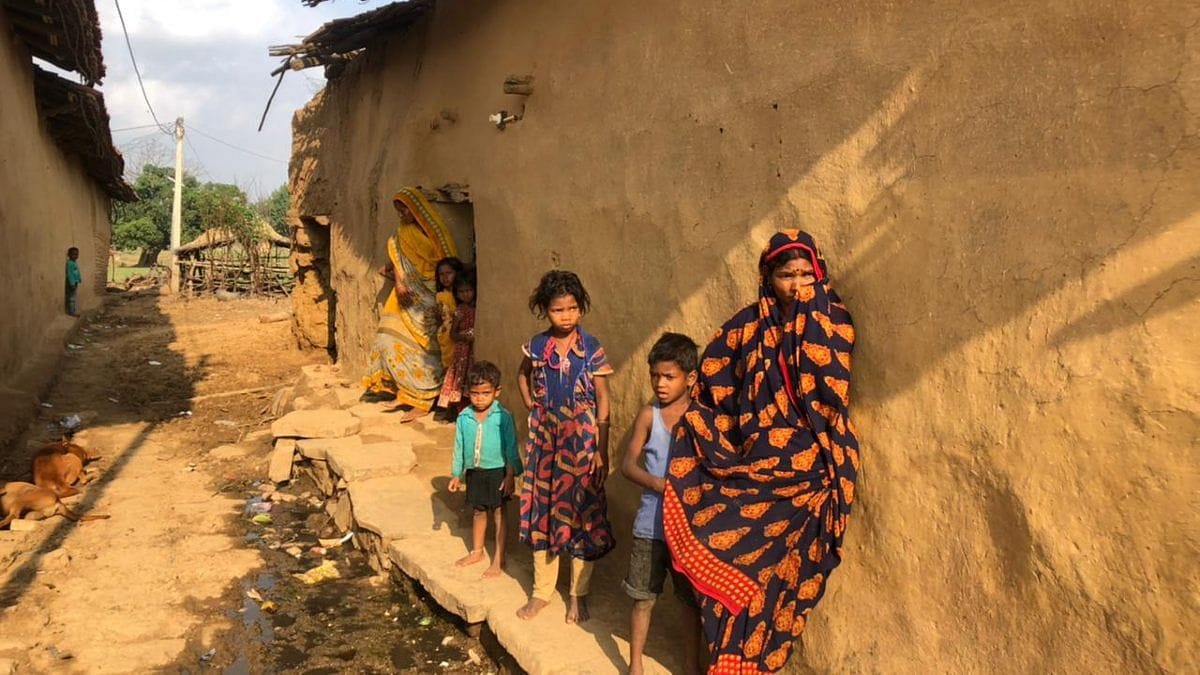The Left and the Right camps have different takes on independence. While the right-wingers exude joy, the left-wingers argue that this independence is a sham. The right-wingers are honest in expressing this opinion while the left-wing are speaking with a forked tongue. Both the camps are led by Brahmins – the most independent section of independent India and members of the governing class, for whom everything is accessible.
Sumit Sarkar concludes the last chapter of his book Adhunik Bharat with a quote by William Morris about pondering “how men fight and lose the battle, and the thing that they fought for comes about in spite of their defeat, and when it comes, it turns out to be not what they meant, and other men have to fight for what they meant under another name.”[1]
Sumit Sarkar is a declared leftist and an undeclared Dwij. He did not analyze who fought for what and who got what. The stand of the right wing is very clear with no ifs and buts. Swaraj is what they had fought for and Swaraj is what they got. They have been the rulers of India for the past 75 years. It is not that they were inconvenienced during the British Raj. They had all the amenities and had no problems either socially or economically. Now they are happier, freer, more prosperous and powerful than earlier. This section is celebrating the Azadi Ka Amrit Mahotsav with great fanfare and is holding massive shows of strength all over the country.
The other class, according to Sumit Sarkar, discovered after their victory that what they had won was not what they had fought for. Now, who are the members of this class and what was the objective for which they had fought but which they didn’t achieve? Sarkar is definitely hinting at the revolutionaries, who looted government treasuries, killed British officers, braved torture in jails and were hanged. The revolutionaries – from the Chapekar brothers from Maharashtra to the left-wingers from Bengal – were just a bunch of emotional Hindus with no clear concept of freedom and democracy. Lala Lajpat Rai was leading a large procession against the Simon Commission. He was injured when the police lathi-charged the procession and died while under treatment. Bhagat Singh murdered Saunders, the British deputy superintendent of police, to avenge this ordinary incident. What was revolutionary about this? How was Bhagat Singh awakening the people by committing a murder? Was he not fighting for the same freedom that Lala Lajpat Rai had in mind? Was Bhagat Singh not aware that Lajpat Rai was a rabidly communal and reactionary Hindu leader? Did he not know that when the Hindu Mahasabha was constituted to counter the Muslim League, Lajpat Rai was named its president?[2] What does Bhagat Singh’s love for a blatantly communal and reactionary Lajpat Rai indicate? Few revolutionaries were secular. All the revolutionary youth were inspired by Dayanand Saraswati, Swami Vivekananda, Aurobindo, the Geeta and the Ramayana – so much so that Bhagat Singh was a supporter of Gandhi. He criticized Gandhi only up to a point. The other revolutionaries were no more than liberal right-wingers. Most of them came from elite sections of society – from landlord, Brahmin and Rajput families. Their only objective was to oust the British because they considered British rule a threat to their religion, culture and freedom. That is why they described the 1857 revolt as the First War of Independence. A revolutionary, Bhagwaticharan Bohra, wrote in the April 1928 issue of Keerti that 1857 “was the first attempt by the Indians to break the chains of slavery. Unfortunately for India, it did not succeed. That is why our enemies refer to this War of Independence as ‘gadar’ and revolt. Had Tantya Tope, Nana Sahib, the queen of Jhansi, Kunwar Singh, Maulvi Ahmed and others won this battle, today, they would have been the heroes of India’s Freedom Struggle and national festivals would have been celebrated in their remembrance.”[3] This exposes the real face of the revolutionaries. They have described a revolt that was aimed at protecting the brahmanical culture and feudalism, as a war of independence.

The fact is that the Azadi Ka Amrit Mahotsav is a joyous occasion for both the right-wingers as well as the leftists. Both are led by the same upper class, which got real freedom after the departure of the British – the freedom to do anything, the freedom to attain anything, the freedom to go anywhere and the freedom to spread their brahmanical culture.
Who wanted freedom
Who wanted freedom through the battle for independence launched by the Hindus during the British Raj? Was freedom the objective of the Brahmins? Was freedom the objective of the Muslims? The answer to both the questions is a firm “no”. None of them wanted freedom. Ambedkar had presented a research paper on the problems of the Indian Dalits in the session on India at the Pacific Relations Institute in Quebec, Canada in 1942. This paper answers the question. He wrote that if attaining freedom was the objective of any class in India, it was of the Untouchables. Freedom was not the objective of the Hindus and the Muslims. They just wanted power. He said that none of the Hindu or Muslim parties was interested in giving freedom to the Untouchables. About the Congress, he said that it was a party of the middle class, supported by Hindu capitalists. Its objective was not to give freedom to the Indians but to attain freedom from the British and acquire control over all the sources of power, then held by the British. He said that the Congress was run by the Brahmins and the capitalists.[4]
The Swaraj for which the Brahmins were fighting meant the right to rule over Indians and the right to usurp all the resources. Tilak said, “Freedom is our birthright.” That was the reason he founded the Home Rule League. Home Rule was his Swaraj. A Brahmin was saying that ruling over Indians was his and fellow Brahmins’ birthright. The Congress took this slogan seriously. Gandhi drew up the contours of the Freedom Struggle keeping this slogan in mind. Ambedkar wrote, “Do they not know that the Congress means the governing class and that the governing class means the Congress? Do they not know that the governing class in India is a Brahmin-Bania combine? That masses are drawn in the Congress only to be camp followers with no say in the making of Congress policy? Do they not realize that for the reasons for which the Sultan could not abolish Islam or the Pope could not repudiate Catholicism, the governing class in India will not decree the destruction of Brahmanism and that so long as the governing class remains what it is, Brahmanism, which preaches the supremacy of Brahmans and the allied castes and which recognizes the suppression and degradation of the Shudras and the Untouchables as the sacred duty of the State, will continue to be the philosophy of the State even if India became free?”[5]
Ambedkar’s analysis of the character of the Congress is applicable to the Bharatiya Janata Party (BJP) of today as well. The BJP is also controlled by the Brahmins and wants to establish the Brahmins as the ruling class. Ambedkar wrote, “This governing class is not a part of the Indian people, it is not only completely isolated from them, but believes in isolating itself, lest it should be contaminated by them.”[6] How can the future of millions of Dalits be bright in the Swaraj of this isolationist governing class!
Ambedkar further said, “The party in India who is fighting for political democracy is the party of the Untouchables who fear that this Congress fight for liberty, if it succeeds, will mean liberty to the strong and the powerful to suppress the weak and the downtrodden.”
Dr Ambedkar had been bringing these challenges to the notice of the socialists and the communists since the 1930s. But ignoring him, they preferred to associate with the Congress. They wanted Ambedkar to come into their political fold but were not ready to work under his banner. The key reason for this was that they were only outwardly socialists or communists. They were Brahmins on the inside. That is why in his above-mentioned research paper, he flayed this class, too: “Ignorant or unmindful one does not know, but the fact remains that these leftists and radical leaders have been giving blind and unquestioning support to the Congress which admittedly is run by capitalists, landlords, moneylenders and reactionaries, only because the Congress calls its activities by the grandiloquent name of ‘Fight for Freedom’.”[7] This is true of today’s Brahmin leftists, too. They oppose the BJP in Parliament but support it outside.
Ambedkar’s apprehensions turned out to be true. The British left and the levers of power came under the control of the Brahmins. This is the 75th year of the Brahmin conquest of India. From the Brahmin rule that began in 1947 up to the Hindu Raj of today, you will find a Brahmin occupying every single rung of the power structure. That is why the Brahmin class is so ecstatic about Azadi Ka Amrit Mahotsav.
How Brahmanism dominated democracy
India has become free, but the Dalits still await freedom. But for the pact signed between the Congress and Ambedkar, the Dalits would have been deprived of even the sham representation they have been given in the legislative bodies and they would not have been given reservations in government jobs. The Dalits are thus still dependent on the governing class, be it the Congress or the BJP, for their entitlements and in return they have to vote for these parties in elections to help grab or retain power.
As soon as the Brahmins got power, as prime minister or chief ministers of states, all key political positions were occupied by Brahmins. Not a single state had a non-Brahmin chief minister. All top posts in the government, the administration and the judiciary were monopolized by Brahmins. Brahmins were named vice-chancellors, registrars and professors in all universities. India’s first President Rajendra Prasad performed an elaborate ritual that involved worshipping 101 Brahmins and washing their feet, before assuming charge, thus marking the beginning of Brahmin Raj. Thus began the brahmanical game of expanding and popularizing brahmanical culture. The Congress party constituted Ramleela committees in the districts. Led by Brahmins and Banias, these committees organized public performances of Ramleela. The All India Radio began broadcasting recitals of Ramcharitmanas every morning. Around 1960, the Brahmin governing class began holding “kirtans” (hymn singing) to strengthen the roots of their religion. Along the same lines, later, the BJP came up with the slogan of “Jai Shri Ram”. Chandrika Prasad Jigyasu has used interesting imagery to describe the kirtans. “Kirtans have taken the country by storm. Great exponents of kirtan have emerged whose magical singing mesmerizes people. Kirtan mandalis have sprung up in cities, villages and mohallas from one end of the country to the other. Kirtans and akhand kirtans are being organized in every house. Even the government radio broadcasts kirtans. In cities, loudspeakers blare out akhand kirtans. There is so much noise that those in the neighbourhood can’t even sleep. Like frogs in the rainy season, colourful swamis can be seen everywhere. Sermons on the Geeta and the Ramayana in their enchanting voices fill the air. The legs of science are broken. When the brains of the Hindus are ground to a fine powder of gooseberry in the millstones of kirtan, how will the seeds of rationalism sprout?”[8]
Jigyasu rightly remarked that the stratagem of kirtans was devised to ensure that the seeds of rationalism did not sprout in the minds of the Dalits and the Backwards.
Caste-based representation opposed
After Independence, the Congress party’s Brahmin governing class was forced to make India a political democracy. That was because the British had transferred power to Indians on the condition that a democracy based on representation for different castes and communities would be established. But for this condition, the Brahmin governing class would have established a Hindu Rashtra. The principle of caste- and community-based representation was not palatable to the Brahmins then, it is not palatable to them now. For the Brahmins, it is a thorn in the flesh and day and night they are busy thinking of ways to end it. Brahmins do not want to give any non-Brahmin the power to make laws, and so they promote incompetent, yes men as their representatives.
An incident that took place in the Madras state exposes the anti-democratic character of the Brahmins. Omprakash Kashyap describes the incident in his book on Periyar. The Brahmin leaders of the Congress were dead set against caste-based representation. The Brahmins formed just three per cent of the population but the 97 per cent others could do little to counter them. On 21 November 1947, the state government issued an amendment to the rule on caste-based representation. Of every 14 posts, six would go to non-Brahmin upper castes, two to backward Hindu castes, two to Brahmins, two to Dalits and one each to Anglo-Indians and Muslims. But the Brahmins who believed that they were entitled to all the posts, were unhappy with just two. The Constitution came into force in 1950. The Brahmins moved the Madras High Court under the banner of “Salem Brahmin Sewa Sangam” challenging caste-based representation. Their argument was that it was violative of the Right to Equality enshrined in Articles 16(1) and 29(2). The High Court declared that caste-based representation was illegal in light of the Constitutional provisions. Periyar Ramasamy organized a huge protest against the decision. Bowing to the pressure, the government filed an appeal in the Supreme Court. Alladi Krishnaswamy Iyer, a Brahmin by caste and lawyer by profession, who was also a member of the drafting committee of the Constitution, argued against the government’s stand in the Supreme Court. The Supreme Court dismissed the appeal and upheld the judgment of the Madras High Court. Thus, the Brahmins and their courts blocked the attempt to give representation to non-Brahmins. Now, there was only one option left – a people’s movement. A powerful movement was launched against the judicial pronouncements. As the fire of the protests spread to areas adjoining Tamil Nadu, the central government was forced to sit up and take notice. On 10 May 1951, the Constitution was amended for the first time, inserting clause 4 in Article 15, which gave the State the power to make special provisions for the upliftment of the backward classes.[9]
The Brahmin government of the Congress party did not implement the provision for reservations for the Dalits in full measure. Only in the 1970s and 1980s, special campaigns were launched to fill up some vacant posts earmarked for the Dalits. The BJP government is playing the same game. No serious effort was ever made for the upliftment of the backward castes. In 1953, a commission on the backward castes was constituted under the chairmanship of Kaka Kalelkar, a Brahmin Gandhian. The commission submitted its report in 1955, making recommendations for the empowerment of the backward castes. But the Brahmin Home Minister Govind Ballabh Pant refused to implement the recommendations citing financial constraints. More than 25 years later, acting under the pressure of popular movements, the second backward classes commission was constituted under the chairmanship of Bindeshwar Prasad Mandal, which submitted its report to the government in 1980. However, the Brahmins at the helm of the Congress party did not allow its implementation for 10 years. In 1990, the National Front government was formed with Vishwanath Pratap Singh as the Prime Minister. He laid the foundations of social justice in Indian politics by implementing the Mandal commission report. Twenty-seven per cent reservation was given to the Other Backward Classes (OBC).
Thus, for 40 years after the Constitution came into effect, the Brahmin governing class did nothing for the upliftment for the backward classes. In this period, the Brahmins progressed by leaps and bounds. But the backward classes, who were already lagging behind, were pushed further back. Call it an irony or the vile anti-human character of the Brahmin ruling class, the Brahmin camp of the Rashtriya Swayamsevak Sangh (RSS) and the BJP was so upset by the implementation of the Mandal report that it pushed the country into the cauldron of caste violence. Aggressive upper castes were provoked into attacking Dalit-OBC students in schools and colleges with lathis. Upper-caste students were driven to self-immolation. Brahmin writers and journalists began writing articles in national newspapers against reservations. In 1992, the entire world saw how a governing class could be such bitter enemies of the weaker sections of their own country and religion.
The RSS-BJP’s Ram Mandir movement, which was launched immediately after the implementation of the Mandal report, was a reaction to the Bahujan politics of Kanshi Ram and the social-justice politics of V.P. Singh. The Congress government was instrumental in the Doordarshan telecasting the serial Ramayana. The telecast of Ramayana was not a coincidence. It was part of a well-thought-out plan of the Brahmin class. In the words of Wendy Doniger, the 78 episodes of Ramayana aired from January 1987 to July 1996 laid the foundations of the destruction of the Babri Masjid.[10] But it is also true that the serial was aimed at weakening the political consciousness of social justice, which had triggered a revolution of the non-Brahmins against the Brahmin governing class.
We need to understand the reason behind this. The life of the Brahmin governing class resides in the varna system. It is just like those old folk tales which talk about the life of a magician residing in a parrot that has been caged on a far-off mountain. When the hero gets hold of the parrot, he gets hold of the life of the magician. If a leg of the parrot is broken, the magician ends up with a broken leg. And when the hero wrung the neck of the parrot, the magician was dead. The same is true of the Brahmin ruling class. If the Varna system starts coming apart, the life of this class comes under threat. This is the reason the Brahmin governing class also upholds the Varna system, calling it eternal. If the Dalit-Backward castes (ie, the Shudras and the Atishudras) remain uneducated, ignorant, miserable, jobless and poor, the Varna system is strengthened. On the other hand, if these castes become educated, aware, prosperous and equal, the Varna system is weakened. Whatever the Brahmin Marxist thinkers would like us to believe, capitalism will not destroy the Varna system. Only equal opportunity to the Dalits and the OBCs in education and jobs will destroy the Varna system. The Brahmin governing class understands this fact very well, because of which it takes great pains to ensure that the Dalits-OBCs remain uneducated and jobless. The BJP’s strategy of saffronizing the Dalit-OBC castes and turning them into “Dharma Rakshaks” (protectors of Hinduism) has proved so effective and successful that it will ensure that the Brahmins will rule India for the next 100 years.
Signs of Hindu Rashtra
See the import of some slogans – “End Reservations”, “Review the Reservation Regime”, “For How Long Do You Want Reservations?”. It is not difficult to understand what these are getting at. But we need to understand that it is the Brahmin ascetics, organizations and leaders who are raising these demands. That is because they are not democrats. They do not want the Dalit-OBC castes to become self-reliant and empowered and they do not want the destruction of the Varna system.
Then, there are some more voices. “Goli maaro … ko”– take up weapons and massacre Muslims. The Brahmin governing class want that the Dalit-OBC castes so terror-stricken by the call for the massacre of the Muslims that they would not dare enter into any political alliance with the Muslims.
You must also be hearing Brahmin ascetics demanding that the Constitution be changed, India be declared a Hindu Rashtra and Hindu Raj be established. Clearly, they want India to be put under a Hindu Raj. Hindu Raj means Brahmin Raj and Brahmin Raj means strict enforcement of the norms of the Varna system.
The BJP government never took any action against those making such demands. This shows how supportive the Brahmin governing class is of anti-democratic activities. Do we need to substantiate this with examples? The “discovery” of the Ramlala idol triggered the Ram Temple movement that led to the tearing down of the Babri Masjid in Ayodhya. Now another discovery of a “Shivalinga” is being used to launch a campaign for the destruction of the Gyanvapi mosque in Benaras. In Mathura, the Idgah is targeted as part of the movement “to reclaim the birthplace of Krishna”. A frenzy is being whipped up to pull down the Taj Mahal by propagandizing that it is actually Tejo Mahal. And then there is this ludicrous claim that the Qutub Minar is Bhim’s mace. Doesn’t all this show that the Brahmin governing class has lost its mind?
Isn’t the Azadi Ka Amrit Mahotsav, a celebration of the victory of the Brahmin governing class? It is an event by the Brahmins, of the Brahmins and for the Brahmins to celebrate 75 years of Brahmin Raj.
[1] Adhunik Bharat, Sumit Sarkar, Rajkamal Prakashan, 1992, p 506
[2] Aaj Ka Bharat, Rajani Palme Dutt, (trans) Ramvilas Sharma (2004), p 413
[3] Bhagat Singh Aur Unke Sathiyon Ke Dastavej, Jagmohan Singh and Chaman Lal (ed), Rajkamal, 2010, p 129
[4] Dr Babasaheb Ambedkar: Writings and Speeches, Volume 9, pp 401-402
[5] Ibid, pp 485-486
[6] Ibid, p 486
[7] Ibid, p 487
[8] Ishwar Aur Uske Gudde, Chandrika Prasad Jigyasu, p 43-44
[9] Periyar E.V. Ramasamy Naicker: Bharat Ke Voltaire, Omprakash Kashyap, Setu Prakashan, 2022 edition, pp 521-527
[10] The Hindus, Wendy Doniger, Penguin, p 668
(Translation: Amrish Herdenia; copy-editing: Anil)
Forward Press also publishes books on Bahujan issues. Forward Press Books sheds light on the widespread problems as well as the finer aspects of Bahujan (Dalit, OBC, Adivasi, Nomadic, Pasmanda) society, culture, literature and politics. Contact us for a list of FP Books’ titles and to order. Mobile: +917827427311, Email: info@forwardmagazine.in)
The titles from Forward Press Books are also available on Kindle and these e-books cost less than their print versions. Browse and buy:
The Case for Bahujan Literature
Dalit Panthers: An Authoritative History



